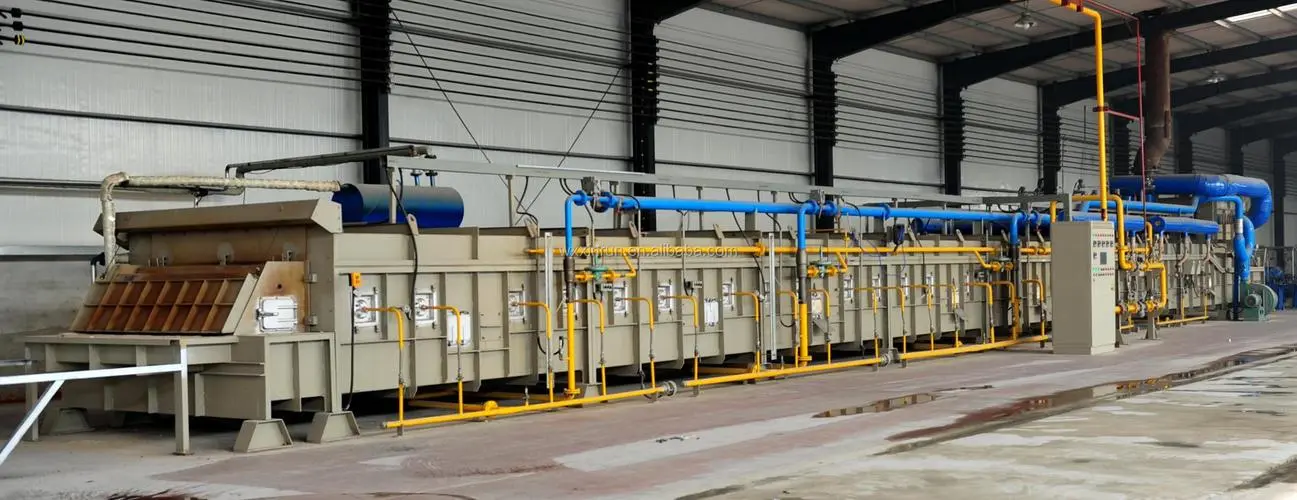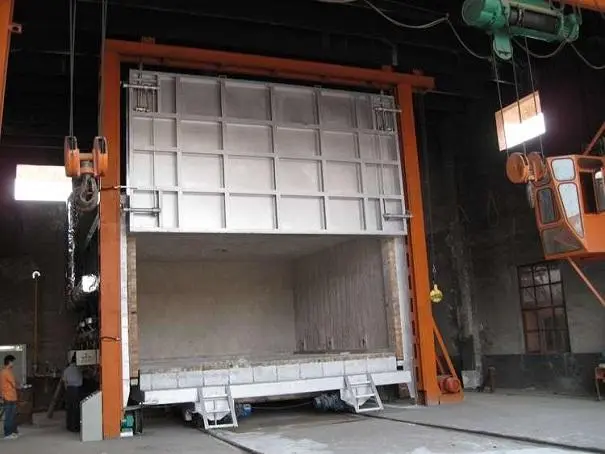Insulation Solution with Ceramic Fiber Modules for Large Annealing Furnaces
Table of Contents
I. Overview of Large Annealing Furnaces

Large annealing furnaces utilize a continuously running mesh belt to convey workpieces through temperature-controlled heating zones, achieving the purpose of annealing the workpieces. They are mainly used in heat treatment workshops of industries such as steel mills, special steels, machining, chemical machinery, heavy industry, metallurgical smelting, casting, forging, flange components, steel structures, wire drawing, environmental protection equipment, machinery supporting enterprises, loaders, diesel engines, military industries, etc. The furnaces are categorized into high-temperature furnaces (up to 1200°C), medium-temperature furnaces (up to 950°C), and low-temperature annealing furnaces (up to 650°C).
II. Full-Ceramic Fiber Insulation Structure for Annealing Furnaces

- Annealing furnaces are manufactured with square or round furnace body structures, featuring furnace chambers with refractory bricks and ceramic fiber composite insulation, or fully fiber-insulated furnace lining structures. Workpieces are placed inside the furnace chamber and heated through electric, oil, or gas heating methods. The workpieces are then heated to the required annealing temperature under natural or protective atmospheres, followed by a period of insulation and either natural cooling or controlled cooling.
The mentioned full-fiber insulation furnace lining structure refers to a composite structure of ceramic fiber modules and ceramic fiber blankets. Current ceramic fiber products can meet the usage requirements in different temperature ranges, from 600°C to 1400°C, satisfying the demands of various industrial furnaces for ceramic fiber products. The use of layered and folded modules has become the mainstream in the design of domestically produced cracking furnaces.
III. Advantages of Full-Fiber Insulation Structure
Excellent insulation and thermal performance, with no thermal expansion stress, resistance to thermal shock, and resistance to mechanical vibration.
Lightweight, with an average volume density of only 220 Kg/m3, replacing traditional heavy refractory materials. This effectively strengthens the thermal insulation structure of the annealing furnace and reduces the structural load.
Uniform overall structure of the furnace lining, with a smooth and compact surface; easy construction and maintenance.
Using ceramic fiber modules eliminates the need for baking, improving the operational efficiency of the annealing furnace.


